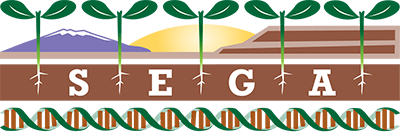You are here
Genetic components to belowground carbon fluxes in a riparian forest ecosystem: a common garden approach.
Publication Type:
Journal ArticleSource:
The New phytologist, Volume 195, Issue 3, p.631 - 9 (2012)ISBN:
0028-646XURL:
http://www.ncbi.nlm.nih.gov/sites/entrez?Db=pubmed&DbFrom=pubmed&Cmd=Link&LinkName=pubmed_pubmed&LinkReadableName=Related%20Articles&IdsFromResult=22642377&ordinalpos=3&itool=EntrezSystem2.PEntrez.Pubmed.Pubmed_ResultsPanel.Pubmed_RVDocSumhttp://www.ncbi.Keywords:
Carbon, Carbon Cycle, Carbon Dioxide, Chimera, Crosses, Genetic, Ecosystem, Genetic Variation, Genotype, Populus, Soil, TreesAbstract:
<p>Soil carbon dioxide (CO(2)) efflux is a major component of terrestrial carbon (C) cycles; yet, the demonstration of covariation between overstory tree genetic-based traits and soil C flux remains a major frontier in understanding biological controls over soil C. Here, we used a common garden with two native tree species, Populus fremontii and P. angustifolia, and their naturally occurring hybrids to test the predictability of belowground C fluxes on the basis of taxonomic identity and genetic marker composition of replicated clones of individual genotypes. Three patterns emerged: soil CO(2) efflux and ratios of belowground flux to aboveground productivity differ by as much as 50-150% as a result of differences in clone identity and cross type; on the basis of Mantel tests of molecular marker matrices, we found that c. 30% of this variation was genetically based, in which genetically similar trees support more similar soil CO(2) efflux under their canopies than do genetically dissimilar trees; and the patterns detected in an experimental garden match observations in the wild, and seem to be unrelated to measured abiotic factors. Our findings suggest that the genetic makeup of the plants growing on soil has a significant influence on the release of C from soils to the atmosphere.</p>
- Log in to post comments
- Google Scholar
- RTF
- EndNote XML
- RIS
Theme by Danetsoft and Danang Probo Sayekti inspired by Maksimer
